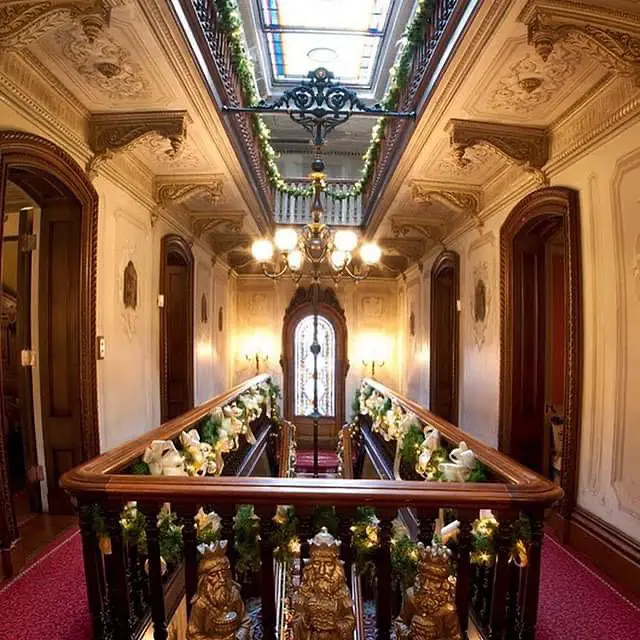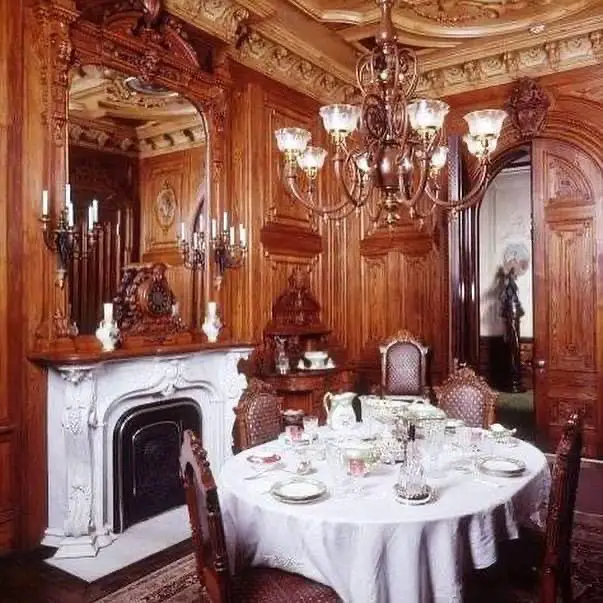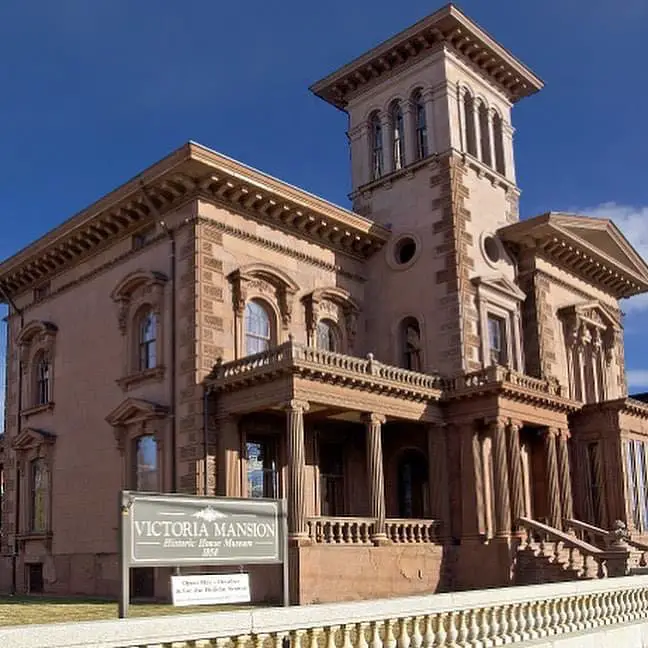Perched on Danforth Street in downtown Portland, Maine, Victoria Mansion — also known as the Morse–Libby House — is one of the nation’s finest and best-preserved examples of the Italianate villa in domestic architecture. Its warm brownstone façade, soaring tower, lavish interiors, and surprisingly advanced mid-19th-century conveniences together create a vivid portrait of affluent American life just before the Civil War.
A Short History
Victoria Mansion was built between 1858 and 1860 as a summer residence for Ruggles Sylvester Morse, a Maine native who made his fortune operating luxury hotels in cities such as New Orleans. Morse engaged leading designers and craftsmen of the day — notably architect Henry Austin of New Haven — to achieve a fashionable, cosmopolitan retreat that reflected tastes he’d encountered during his hotelier career. In 1941 the house opened to the public as a museum; it was declared a National Historic Landmark in 1970–71 for its outstanding architectural and decorative integrity.
Architectural Significance
The mansion is a textbook example of Italianate villa style translated into an American urban setting: an asymmetrical plan, bracketed cornices, round-arched windows with ornate surrounds, and a prominent square tower (campanile) that gives the structure its instantly recognizable silhouette. Built of brownstone, its exterior ornament and proportions convey both Italianate romanticism and the self-conscious display typical of newly wealthy American patrons of the era. Architectural historians rate it among the nation’s most important pre-Civil War domestic designs.
Interiors, Furnishings, and Decorative Arts
What makes Victoria Mansion especially rare is the survival of so much original interior fabric and the presence of coordinated, high-quality furnishings and finishes. The mansion’s rooms display frescoed ceilings and walls, hand-carved woodwork, imported wallpapers, and bespoke furniture — much of it commissioned to create a unified aesthetic. Designers associated with the project include the New York and Boston decorators whose work represented the cutting edge of American and European taste at the time. Visitors can still see many original decorative schemes and furnishings that together testify to the owner’s cosmopolitan ambitions.
Technological Conveniences for 1860
Although built before the widespread adoption of modern utilities, Morse equipped the mansion with notable conveniences and innovations for its day — items intended to make the household more comfortable and efficient. The house’s design and objects provide good evidence of how the wealthy integrated the latest technologies (gaslight, early plumbing ideas, specialized service spaces) into domestic life prior to later Victorian changes.
Ownership, Museum Conversion, and Preservation
After Morse’s death in 1893 the house changed hands (the Libby family owned it for several decades), and by the 1930s it had fallen into disrepair. Saved from demolition in 1940, the mansion opened as Victoria Mansion museum in 1941 and has since been the subject of ongoing preservation and interpretation efforts. Its designation as a National Historic Landmark recognizes both the architecture and the unusually complete survival of interior decorative schemes. Ongoing stewardship has focused on conservation of finishes and furnishings as well as outreach and public programming.
Facing the Past: Context & Recent Conversations
In recent years, like many historical sites, Victoria Mansion has confronted questions about the wider economic and social contexts that helped make such domestic displays possible. Local reporting and scholarship have explored Portland’s ties to regional and national economies of the 19th century and encouraged museums to interpret those connections thoughtfully alongside the core architectural and decorative story. This kind of public conversation helps broaden visitor understanding beyond style and taste to include labor, commerce, and ethics of the era.
Visiting Today
Victoria Mansion operates as a house museum offering guided tours (hours and ticketing available via the mansion’s website). Visitors typically tour elaborately finished rooms and learn about the people who lived and worked there, the building’s design, and the later efforts to save and conserve the property. Special events and seasonal programs (such as holiday tours) are part of the museum’s calendar. For the most current visiting hours, guided-tour policies, and ticket prices check the official site.
Why Victoria Mansion Matters
Victoria Mansion is a rare, tangible survival of a very particular moment in American material culture: the wealthy mid-19th-century client who blended European taste, new manufacturing, and the latest household technologies to stage a sophisticated urban summer residence. Its architecture, interiors, and the many objects associated with it make the house an essential resource for anyone interested in Victorian domestic life, design history, and preservation practice.







